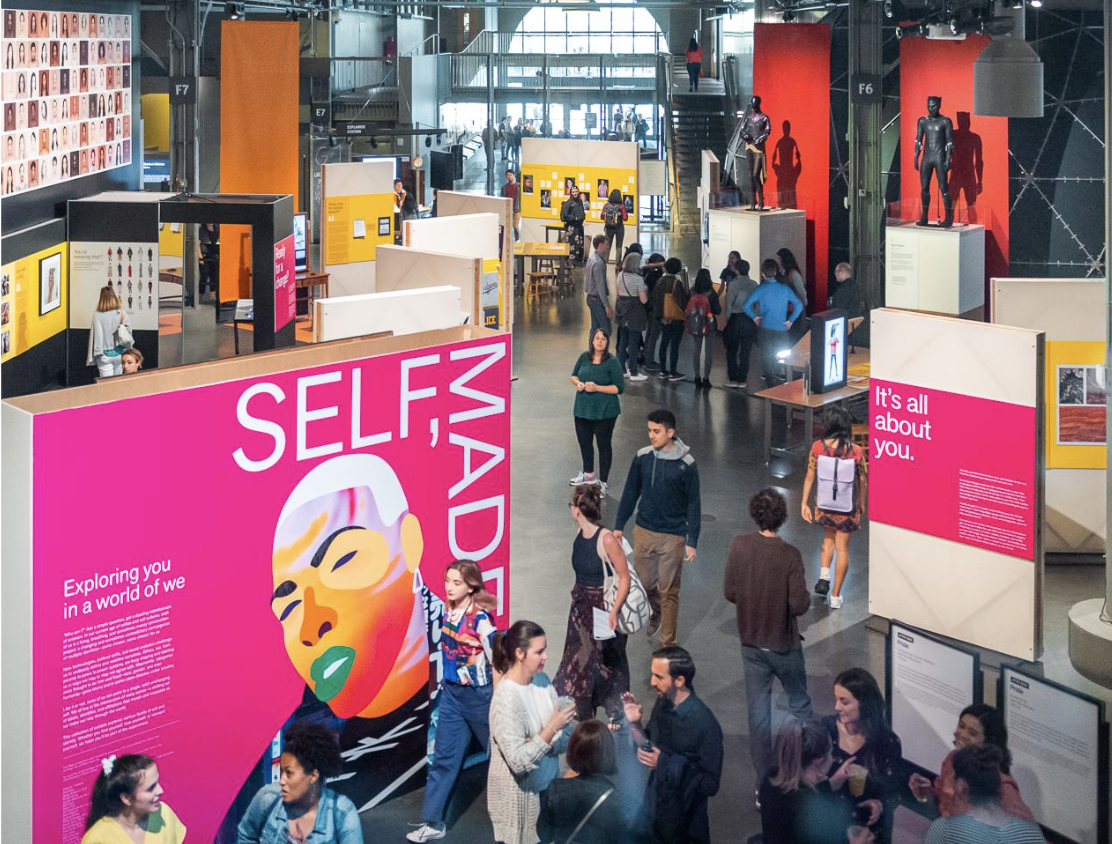Project
Create and assess new products (exhibits) for a large museum exhibition.
Challenge
Create a compelling exhibition with over 20 experiences that offer diverse audiences an opportunity to investigate a personal topic in a very public setting, the world-famous Exploratorium museum in San Francisco.
Role
Lead UX Researcher responsible for formulating research objectives, selecting appropriate methodologies, recruiting participants, collecting data, analyzing and synthesizing findings, and training & mentoring junior researchers.
Team
Content Specialists, Project Director, Exhibit Developers, 2D and 3D Designer, Engineers, Prototypers
1 / Discovery Phase
Goals + Methods
Conduct intercept interviews to explore what visitors already know and what expectations they have about the topic of the exhibition.
Impact
A study with 151 participants, spanning teenagers to adults, unearthed divergent age-based perspectives on the concept of 'identity.' Notably, it illuminated the inadvertent link between 'identity' and other topics like identity theft.
These findings provided a grounded basis for our exhibit development and marketing strategy, firmly rooted in data.
2 / Design Research
Goals + Methods
Conduct contextual inquiry to observe and understand how visitors interact with exhibits in their natural environment.
Concept testing of early exhibit ideas to help identify which interactives move forward
Engage a diverse range of users, extending beyond the current museum visitor base to offer feedback on the usability, accessibility, and relevance of the exhibits.
Impact
A/B testing comparing two versions of an exhibit measured the impact of different design approaches that encouraged visitor risk-taking revealing that visitors preferred low walls to offer both privacy and visibility of their family or friends.
Observations revealed users struggled, and sometimes abandoned more text-heavy exhibits. To better understand why, we conducted 6 usability tests. This resulted in edits shifting to plain language over jargon and re-organized content.
Because our team and current visitors didn't reflect our target audience in terms of age, ethnicity, orientation, and ability we collaborated with subject matter experts.
We worked with the Human Rights Campaign staff to learn best practices around inclusive practices,
Met with a diverse panel of individuals with disabilities shared insights on common barriers experienced in public spaces.
Added 5 young adult “Explainers” to our XfN team to advise on trends.
3 / Evaluative Study
Goals + Methods
Conduct semi-structured interviews with a randomly selected group of exhibition visitors to evaluate the completed exhibition, to uncover both its successful elements and areas that require improvement.
Impact
I effectively persuaded the skeptical Project Director that the research led to significant improvements and high visitor satisfaction, demonstrating the benefits and ROI of incorporating user research into our projects.
A study of 62 visitors revealed key insights including that the marketing campaign didn’t hit the target demographic, but the majority of visitors reported learning new things about themselves and felt an increased empathy toward others, the primary success metric.
With a focus on inclusive research practices, I adopted a new approach that endured beyond this project. All interviewees receive a written copy of the questions reducing the reliance on auditory processing.



